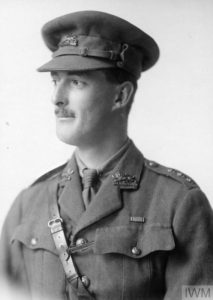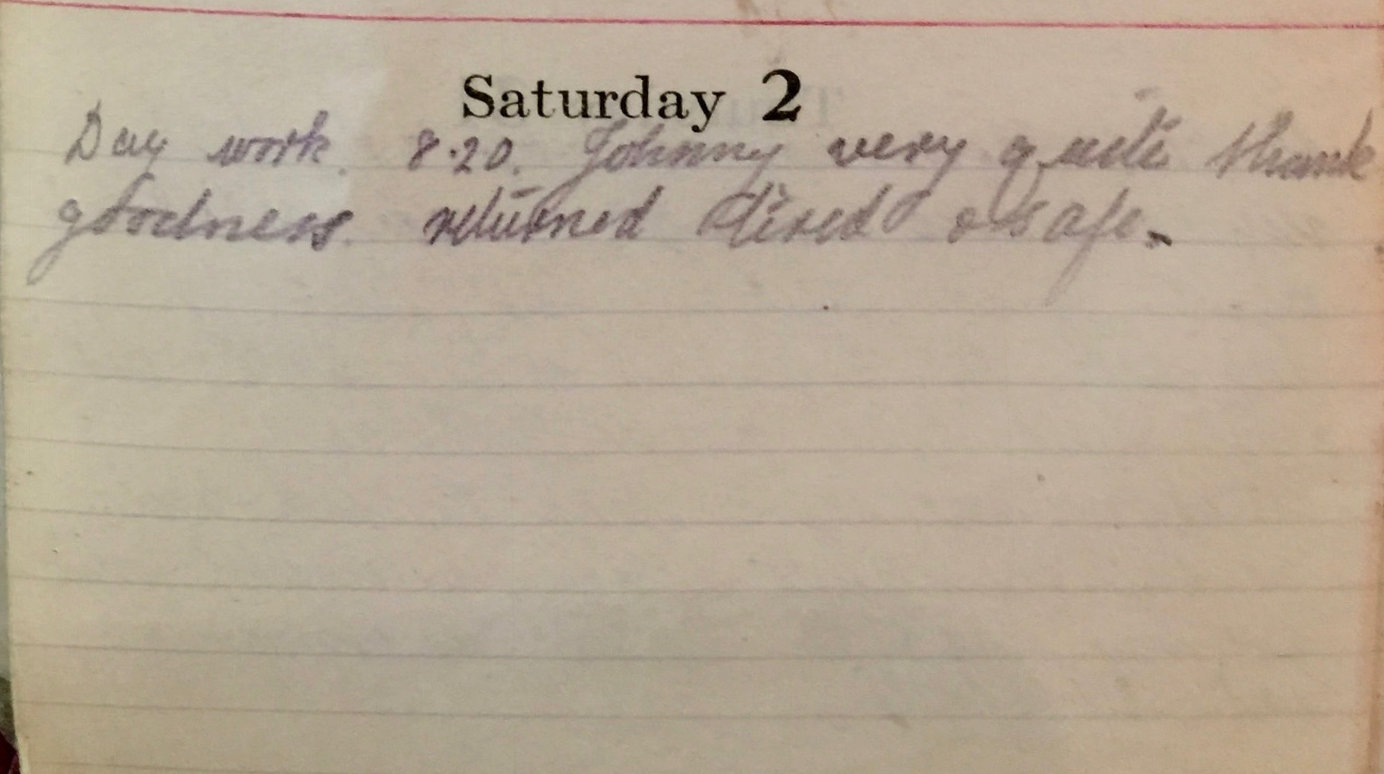Saturday Feb 2nd, 1918
Day work 8:20. Johnny very quiet – thank goodness. Returned tired and safe.
Both Frank’s & the Battalion’s diaries today have little to report. So we thought it might be the right time to talk a little about the structure of the British Army, of which the 13th and Frank were a small part. Don’t worry – normal service will resume tomorrow!
The Structure of the British Army
Before August 1914, the regular British Army, all volunteers, was about 250,000 strong with many serving overseas. The Territorials added a further 450,000 retired and part-time soldiers. The BEF that went to France in 1914 was ~150,000 strong. By contrast the French and Germans had large conscript armies of 1.65 million and 1.85 million respectively. Despite its size, these ‘Old Contemptibles’ successfully halted the German advance in the early months of the war. However, it was hard-won and the regular British Army was effectively decimated.
In 1914, the British Army’s primary organizational unit was a Regiment. There were just over 100 Regiments, most of which comprised two Battalions of around a thousand men each. They included four Guards regiments, 68 regiments of the line, 31 cavalry regiments, a Rifle Brigade, Artillery and other support units. The Royal Flying Corps (RFC), also part of the army, had 84 aircraft.
Every Battalion contained four Companies, comprising four Platoons, each of which was made up of four Sections. Over 1914-18, the Battalion size remained constant and was the most important structure to the Private who would know its Officers by name or sight. The Regiment continued to provide a sense of belonging and affinity for the soldiers but ceased to have much military importance. Instead Divisions were the basic building block of the Army, usually comprising three Brigades and a total of 12 to 18,000 men. Over the course of the War, the Army mobilized almost nine million British and Commonwealth troops.
The British Salonica Force (BSF) in 1918

The BSF had been under the command of General GF Milne, KCB, DSO since 1916. It comprised Army / General HQ, XII Corps and XVI Corps, each 50-60,000 strong. Under Army / General HQ came the Mounted Brigades, Royal Artillery Garrison and the RFC (which became part of the Royal Airforce in April 1918). The XVI Corps was made up of 10th Irish, 27th and 28th Divisions. The XII Corps was led by Lieutenant-General HFM Wilson, KCB, KCMG. It comprised two Cavalry squads of the Lothian & Borders Horse, and 22nd and 26th Divisions, (the 60th had left for Egypt in June 1917).
The 22nd Division was led by Major General J Duncan CMG, DSO and comprised 65th, 66th and 67th Infantry Brigades plus Divisional Troops (Pioneers, Royal Engineers and Cyclists) and Artillery units. The 66th Infantry Brigade was led by Brigadier General FS Montague-Bates CB, CMG, DSO and comprised four Battalions: 12th Cheshire, 9th South Lancashire, 13th Manchester and 8th King’s Shropshire Light Infantry. The 13th Manchester was led by Lieutenant Colonel JFB Morrell, MVO, DSO and comprised A, B, C and D Company, each of whose Platoons were numbered 1 to 4.
Lieutenant Colonel Morrell was the commanding officer of the 13th Manchester. Of the many officers within the Battalion, he was one of only two that were in the regular Army in 1914. All the others were Temporary Officers for the duration. He stayed in the Army, rejoining the King’s Own Regiment after the war. In 1924 he was seconded for service as an Officer of ‘a Company of Gentlemen Cadets’ at the Royal Military College. He retired in 1933 as a Major and was granted the rank of Lieutenant Colonel.¹
As you will have worked out, Private Frank Whitehead (304092) belonged to Number 4 Platoon in B Company of the 13th Manchesters, within the 66th Infantry Brigade of the 22nd Division of XII Corps of the British Salonica Force.
13th (Service) Battalion War Diary – 2nd February 1918 – Vladaja Camp
Usual working parties
References & Further Reading
British Army during WWI, Wikipedia
Military Structures & Ranks by Jonathon Boff for British Library
Structure of the British Army in WW1 in Researching WW1
¹ London Gazette of February 22nd 1924 & September 8th, 1933.



2 thoughts on “British Army Structure – February 2nd, 1918”
Comments are closed.